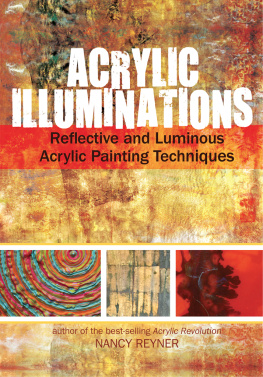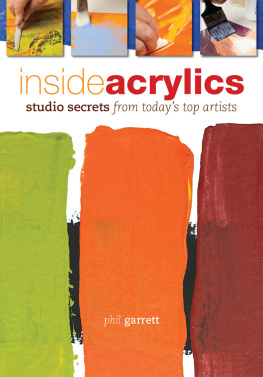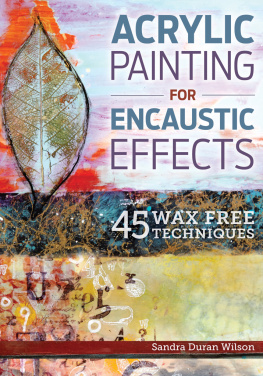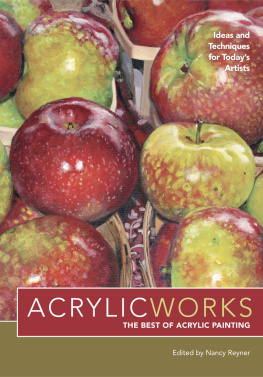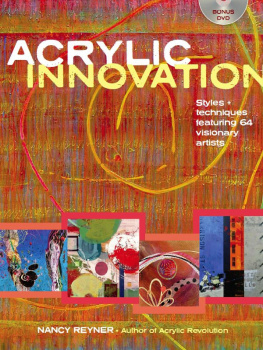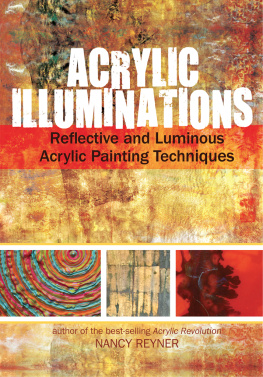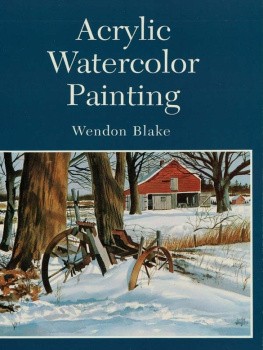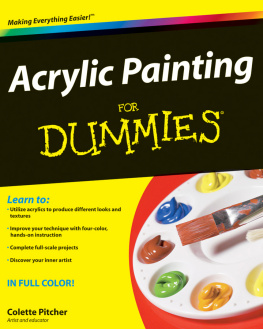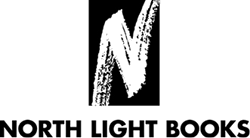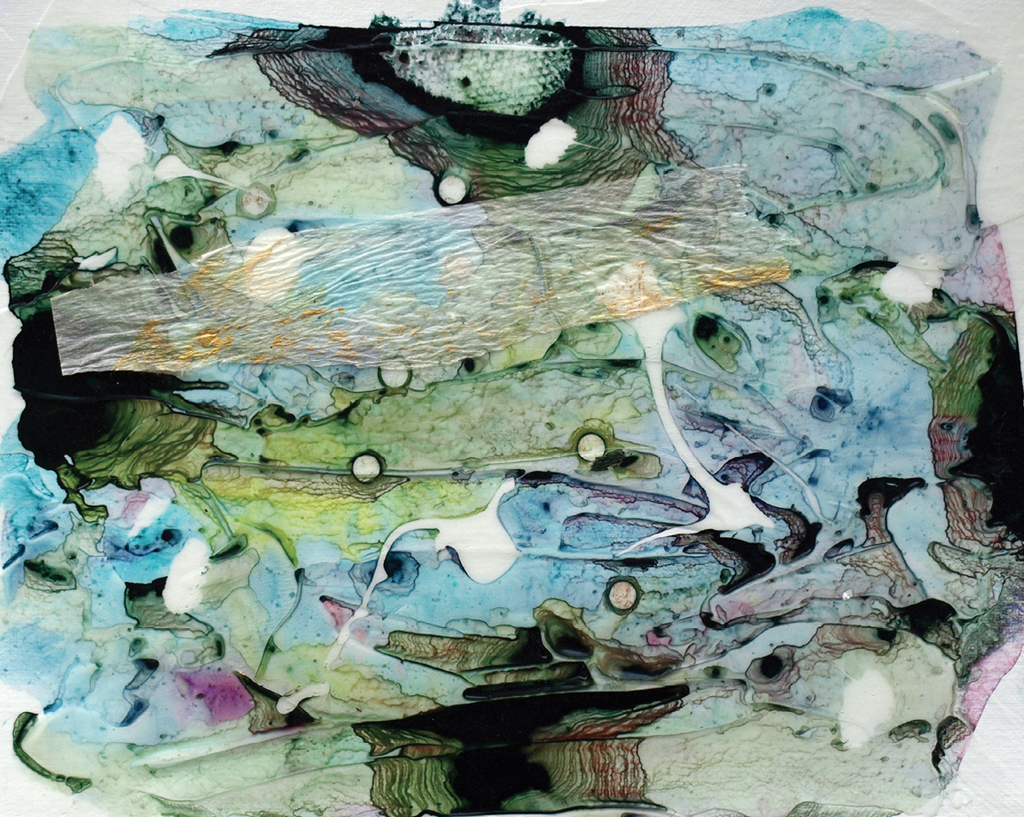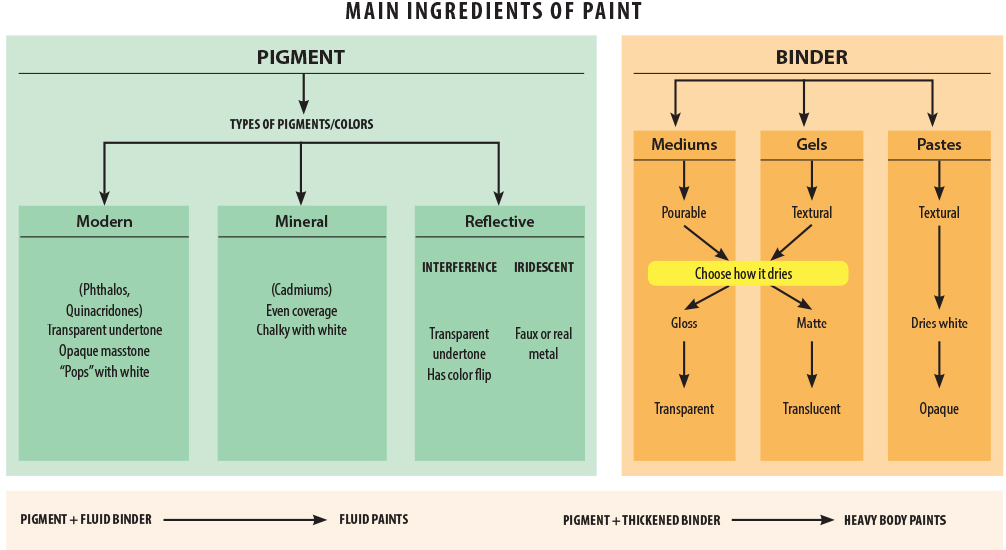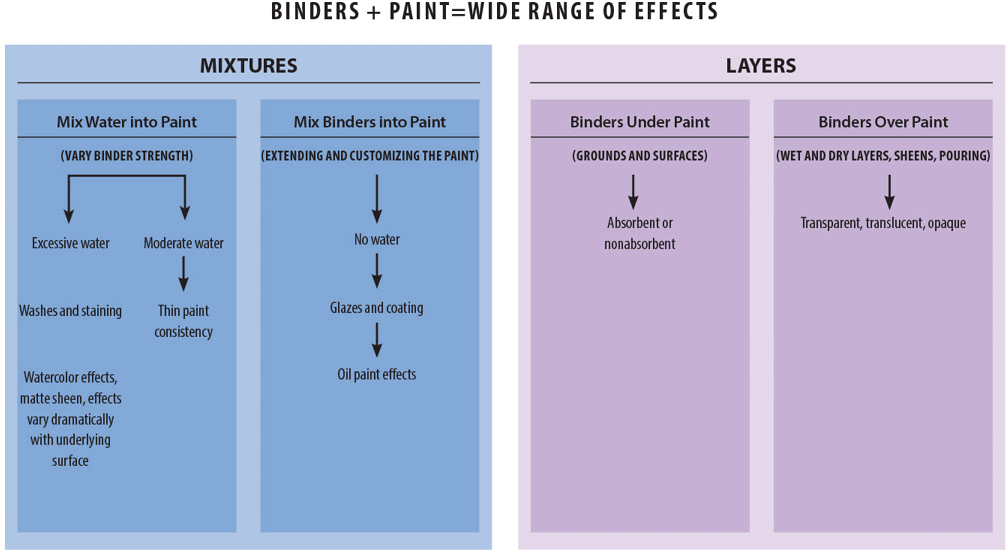Thank you for purchasing this Artist Network eBook.
Sign up for our newsletter and receive special offers, access to free content, and information on the latest new releases and must-have art resources! Plus, receive a coupon code to use on your first purchase from NorthLightShop.com for signing up.
or visit us online to sign up at
http://artistsnetwork.com/ebook-promo
Contents
Introduction
About This Book
Art enhances our lives. Whether we view it for pleasure or create it as artists, art can serve us in ways both private and public. Making art just for ourselves is similar to writing in a diary: the writing is personal and not meant to be read by others, eliminating the need for editing. On the other hand, artists intending to communicate through their work to others will first need to grab someones attention with the work visually.
Getting attention has more up its sleeve than loud colors or provocative imagery. This book offers fifty ways to catch the eye. The range of techniques swing from subtle glazing on metal leaf, to pearly sheens of exotic beetle wings, as well as boldly colored optical effects. Similar to my previous books, Acrylic Revolution and Acrylic Innovation, Acrylic Illuminations is a recipe book of techniques, meant to be used like you would a cookbook for a dinner party. Start by selecting what inspires you and vary the ingredients to your liking. Incorporate them into your current process or allow them to move your work in a new direction.
All of my books, like my teaching, are created with the intent to offer ways of inventing, not copying. Step-by-step instruction allows mastery of a technique. It is up to the reader to transform the technique into a finished painting of his or her choice. Some techniques just by themselves can produce a complete painting. Often, however, working further than the technique dictates will push the work from a singular technique into a more satisfying painting. Use the techniques for personal or professional work, for abstract or realistic styles, as backgrounds, top layers or for accents layered in between. Try combining several techniques in one painting by layering each technique separately (see for multiple technique layering). The instructions are not set in stone, but meant to inspire you to change them, encouraging our wonderful innate sense of play.
Id also like to emphasize that techniques are not styles. This means that every technique in this book can be used to create a representational or abstract image in any style. I have purposely varied the artwork examples as reminders, hopefully dispelling a myth that working in acrylic also means that the work must be abstract. As an example, the pouring technique in can be used to create some interesting organic and abstract forms, yet can also create beautiful landscape elements and backgrounds for still life and portraits.
Each technique is demonstrated with concise illustrated steps and finished painting examples. A bonus chapter, Crash Course on Acrylic, opens the book and offers an overview on how to use acrylic paints and products to their fullest potential. This first chapter has great tips to guide you through any technique you choose with greater ease. Please read this section, as even experts can benefit. Terms are defined, while general tips and information that pertain to techniques are explained, allowing a fuller understanding of the technical process. This chapter adds multiple ways to individualize techniques by expanding and varying them to your preferences.
The remaining four chapters contain fifty techniques, grouped together by particular materials or visual effects. Specific tips for those techniques are included in the first two pages of each chapter. These tip pages are vital to obtain best results. Please read these as they can save you both time and money.
Best wishes for inspiration, new ideas and eye-catching results!
SECTION 1
Crash Course on Acrylic
Acrylic offers a wide variety of painting possibilities. This example combines .
The techniques in this book are meant to be self-explanatory. Yet the more we know about the paint and medium the better we can play around with instructions, experimenting and changing them to suit our own needs. This first section is dedicated to exploring essential aspects of acrylic for the painter. Reading through this section will hopefully equip you with helpful ideas and tips allowing more ease and success with the fifty techniques that follow.
In workshops I often use the following analogy to help students understand that acrylic is not just paint. For me, acrylic paint is to all other mediums as Photoshop is to a typewriter. Imagine only using Photoshop to type a letter! We would be missing out on the vast possibilities that Photoshop has to offer. Its the same with acrylic. To approach acrylic only as if we are painting with oil or watercolor would inhibit us from its broad range of painting potential. To help explain this concept, Ive created a chart covering an overview of acrylic painting. For those who dont like charts, keep reading the pages immediately following for an explanation of each facet of the chart.
Your Acrylic Toolbox
Inventing with Your Toolbox
Your Acrylic Toolbox
For our purposes as painters, lets simplify the concept of paint into two components: pigment and binder. Pigment adds color while binder makes it paintable. Binder, also referred to as vehicle or medium, transforms the pigment particles into a wet form creating a substance we can use as paint. All paints have these same two main components. Oil paint is colored pigment held together with oil as the binder. Casein is colored pigment held together with milk as the binder. Egg tempera uses egg as binder. Watercolors binder is not water but gum arabic. Acrylic paint is colored pigment held together with acrylic binder (also referred to as polymer or plastic).
Whatever term you choose, acrylic binders create wonderful paint. Acrylic is now considered the most archival of all paints. It wont yellow or crack like oil and is not delicate and resoluble like watercolor. Labs that test the longevity of acrylic for stability and permanence use accelerated time testing to simulate what the paint film would be exposed to (such as light, dust and air) for 500 years or more. Even though acrylic has only been available as a paint for a little over seven decades, these tests verify its archival potential. Other factors like storage conditions, quality of substrates used, painting methods, and whether the artist incorporated archival materials and methods such as varnishing with UV protection also play a role in a paintings archival capacity.

